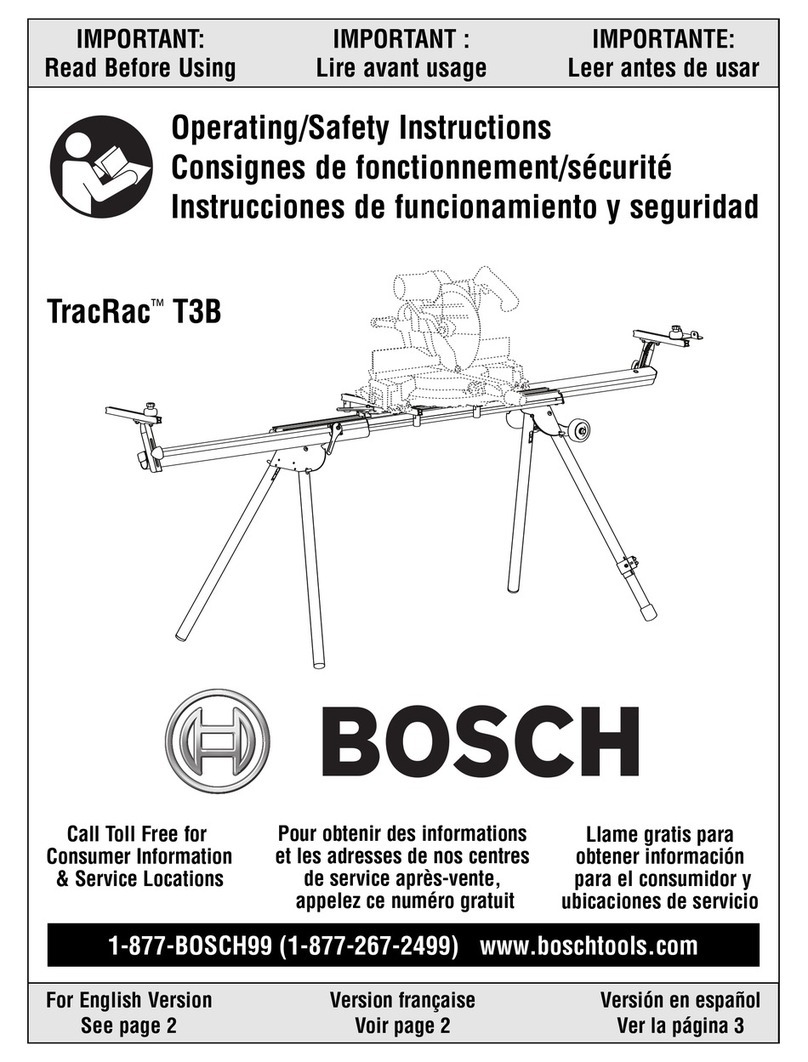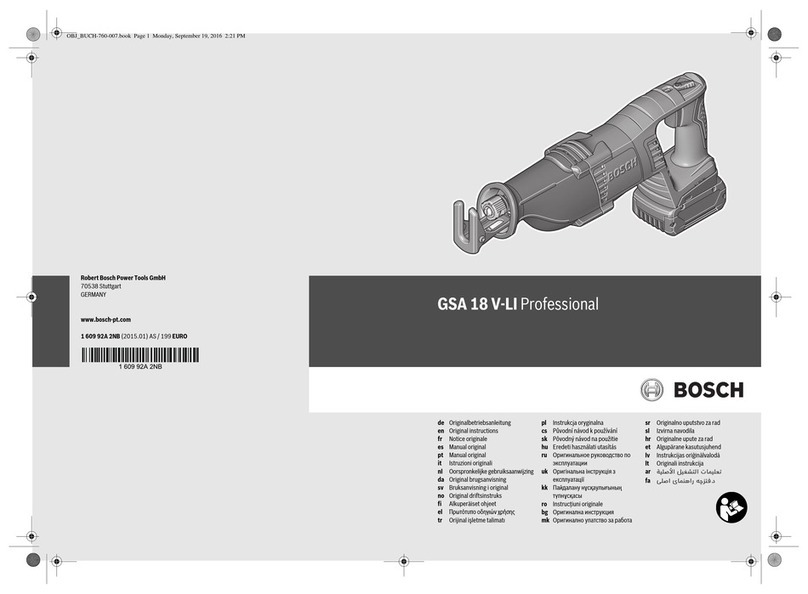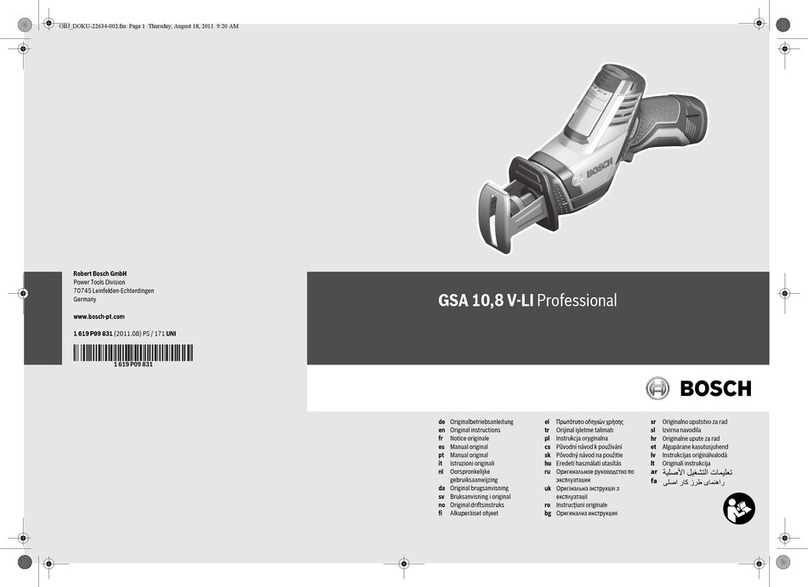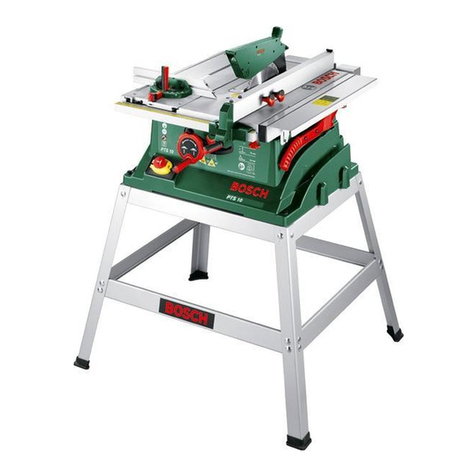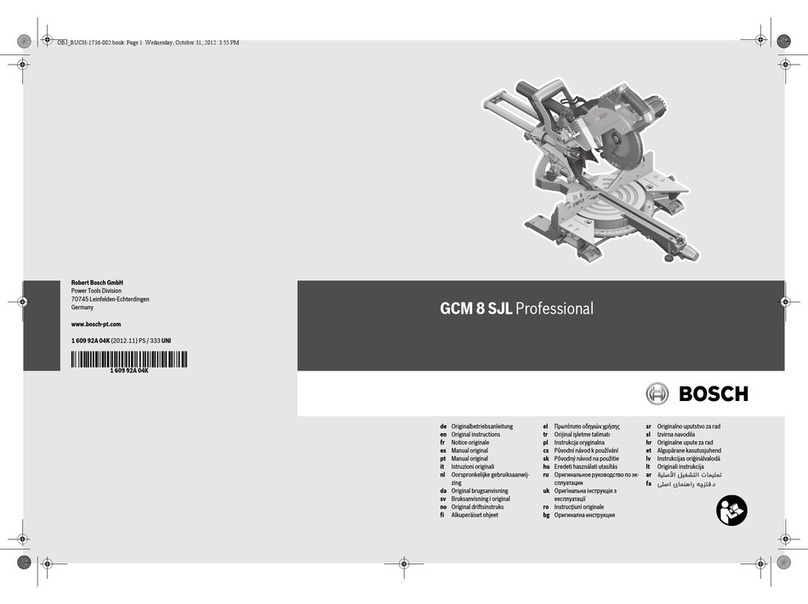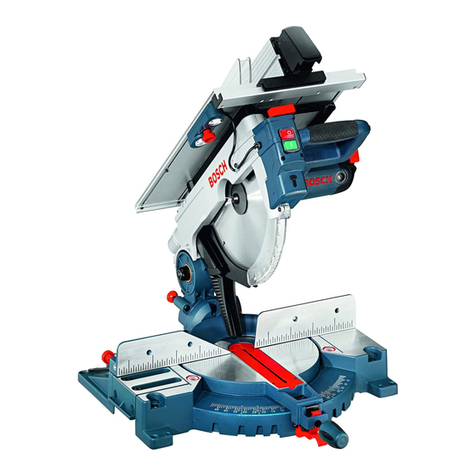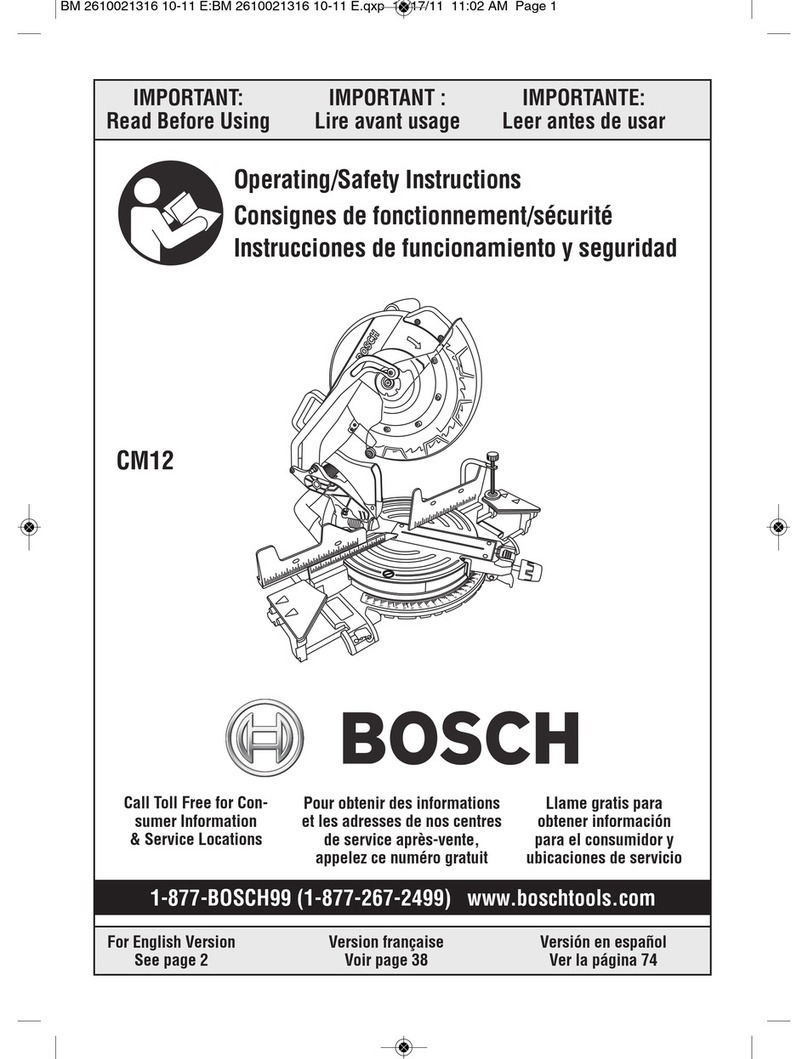
26 | English
1 609 92A 1GN | (23.6.15) Bosch Power Tools
Do not use the power tool if the switch does not turn it
on and off. Any power tool that cannot be controlled with
the switch is dangerous and must be repaired.
Disconnect the plug from the power source and/or re-
move the battery pack, if detachable, from the power
tool before making any adjustments, changing acces-
sories, or storing power tools. Such preventive safety
measures reduce the risk of starting the power tool acci-
dentally.
Store idle power tools out of the reach of children and
do not allow persons unfamiliar with the power tool or
these instructions to operate the power tool. Power
tools are dangerous in the hands of untrained users.
Maintain power tools and accessories. Check for mis-
alignment or binding of moving parts, breakage of
parts and any other condition that may affect the pow-
er tool’s operation. If damaged, have the power tool re-
paired before use. Many accidents are caused by poorly
maintained power tools.
Keepcutting tools sharpandclean. Properly maintained
cutting toolswith sharp cutting edges are lesslikelyto bind
and are easier to control.
Use the power tool, accessories and tool bits etc. in ac-
cordance with these instructions, taking into account
the working conditions and the work to be performed.
Use of the power tool for operations different from those
intended could result in a hazardous situation.
Keephandles and graspingsurfacesdry,cleanandfree
from oil and grease. Slippery handles and grasping sur-
faces do not allow for safe handling and control of the tool
in unexpected situations.
Service
Haveyourpower tool servicedbyaqualifiedrepair per-
son using only identical replacement parts. This will en-
sure that the safety of the power tool is maintained.
Safety Warnings for Mitre Saws
Mitre saws are intended to cut wood or wood-like prod-
ucts, they cannot be used with abrasive cut-offwheels
for cutting ferrous material such as bars, rods, studs,
etc. Abrasive dust causes moving parts such as the lower
guard to jam. Sparks from abrasive cutting will burn the
lower guard, the kerf insert and other plastic parts.
Use clamps to support the workpiece whenever possi-
ble. If supporting the workpiece by hand, you must al-
ways keep your hand at least 100 mm from either side
of the saw blade. Do not use this saw to cut pieces that
are too small to be securely clamped or held by hand. If
your hand is placed too close to the saw blade, there is an
increased risk of injury from blade contact.
The workpiece must be stationary and clamped or held
against both the fence and the table. Do not feed the
workpiece into the blade or cut “freehand” in any way.
Unrestrained or moving workpieces could be thrown at
high speeds, causing injury.
Push the saw through the workpiece. Do not pull the
saw through the workpiece. To make a cut, raise the
saw head and pull it out over the workpiece without
cutting, start the motor, press the saw head down and
push the saw through the workpiece. Cutting on the pull
strokeislikelyto cause the saw bladetoclimbontopof the
workpieceandviolentlythrowthebladeassembly towards
the operator.
Nevercrossyourhand over the intendedline ofcutting
either in front or behind the saw blade. Supporting the
workpiece “cross handed” i.e. holding the workpiece to
the right of the saw blade with your left hand or vice versa
is very dangerous.
Do not reach behind the fence with either hand closer
than 100 mm from either side of the saw blade, to re-
move wood scraps, or for any other reasonwhile the
bladeis spinning. The proximity of thespinningsawblade
to your hand may not be obvious and you may be seriously
injured.
Inspect your workpiece before cutting. If the work-
piece is bowed or warped, clamp it with the outside
bowedfacetowardthe fence.Alwaysmakecertainthat
thereis no gap betweentheworkpiece,fenceandtable
along the line of the cut. Bent or warped workpieces can
twist or shift and may cause binding on the spinning saw
blade while cutting. There should be no nails or foreign ob-
jects in the workpiece.
Do not use the saw until the table is clear of all tools,
wood scraps, etc., except for the workpiece. Small de-
bris or loose pieces of wood or other objects that contact
the revolving blade can be thrown with high speed.
Cutonlyoneworkpieceat a time. Stacked multiple work-
pieces cannot be adequately clamped or braced and may
bind on the blade or shift during cutting.
Ensure the mitre saw is mounted or placed on a level,
firm work surface before use. A level and firm work sur-
face reduces the risk of the mitre saw becoming unstable.
Plan your work. Every timeyou change the bevel or mi-
tre angle setting, make sure the adjustable fence is set
correctly to support the workpiece and will not inter-
fere with the blade or the guarding system. Without
turning the tool “ON” and with no workpiece on the table,
move the saw blade through a complete simulated cut to
assurethere willbeno interferenceor danger ofcuttingthe
fence.
Provide adequate support such as table extensions,
saw horses, etc. for a workpiece that is wider or longer
than the table top. Workpieces longer or wider than the
mitre saw table can tip if not securely supported. If the cut-
off pieceor workpiece tips, it canlift the lower guard or be
thrown by the spinning blade.
Do not use another person as a substitute for a table ex-
tension or as additional support. Unstable support for
the workpiece can cause the blade to bind or the work-
piece to shift during the cutting operation pulling you and
the helper into the spinning blade.
The cut-off piece must not be jammed or pressed by
any means against the spinning saw blade. If confined,
OBJ_BUCH-2325-002.book Page 26 Tuesday, June 23, 2015 9:26 AM


